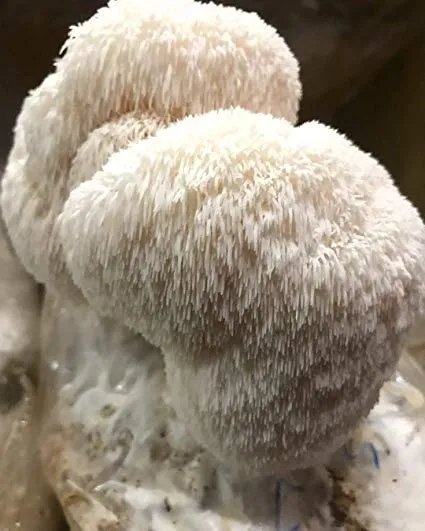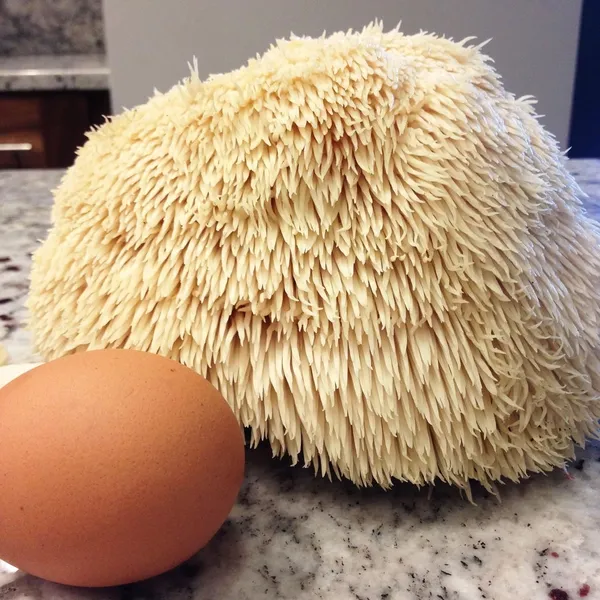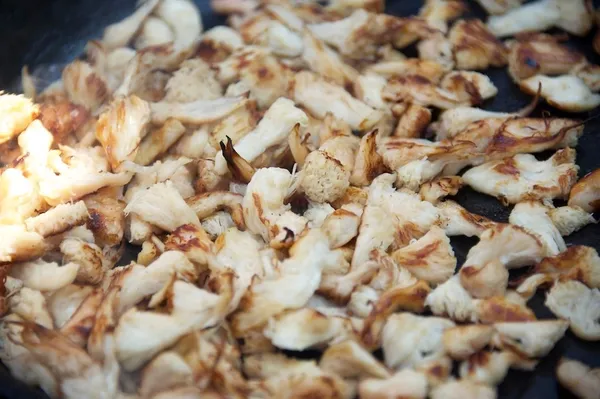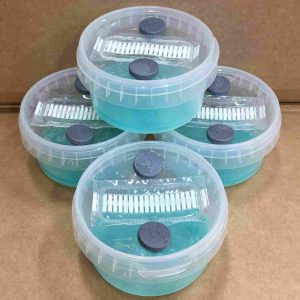Description
The Lion’s Main
If I had to choose, I would say growing Lion’s Mane mushroom takes the top spot.
That’s because Lion’s Mane is not only easy and fun to grow, but also the species produces huge delectable fruiting bodies that can be an awesome addition to any meal. As an added bonus- it also boasts some pretty incredible health benefits.
Unfortunately, you’re not likely to find Lion’s Mane at your local grocery store- so having a fresh supply means that you’ll need to learn how to grow it indoors yourself. We can help you there.
Lion’sMane Mushroom grows in large snowball like formations. The mushroom are white, sometimes browning if the spines are damaged or with age. Individual mushrooms can be quite large, sometimes weighing over 1 lb. The spines or “teeth” start out quite small, but elongate with age.
The mushroom is spongy and sometimes semi-hollow. It is sensitive to direct spraying when growing and bruises easily.
Natural habitat
Lions Mane is most commonly found on dead and decaying hardwood logs, most often in the fall throughout North America.
On Agar
Lions Mane is unique on Agar. It rarely grows out to the edge of the plate, but instead form little glacier like formations emanating from the initial wedge. Long teeth grow out from the wedge in all directions. The mycelium is also slow to take off initially.
Spawn Types
Grains, especially Rye grain. Watch Lion’s Main very closely, as it has the tendency to start fruiting well before full colonisation. Lions Mane grain spawn needs to be shaken often to ensure full colonisation of the spawn. The mycelium can look thin and wispy, so close inspection is required. It can sometimes look like colonisation is incomplete even though its fully colonised.
Substrate
Lions Mane grows best on supplemented hardwood sawdust. Supplement with wheat bran at 10-20%. Higher spawn rates are effective with Lions Mane, increasing the chances that full colonisation will take place. Lion’s Mane will also grow well on the “master’s mix”.
Fruiting Chambers
Use large autoclave filter grow bags like the XLS UNICORN BAGS FOUND IN THE SHOP to create a fruiting block. Once full colonisation is achieved, fruit by slicing small “x’s” in the bag at the site of primordia, or where the Lions Mane naturally starts to fruit. Do not cut off the top of the bag. More holes will cause more smaller fruit, whereas less holes will ensure fewer but larger fruit.
YIELD
More than 2 lbs of Lions Mane can be harvested from a single 5 lb fruiting block over multiple flushes. Some individual fruits can weigh well over one pound.
Harvest
Harvest the Lions Mane by cutting the “snowball” off close to the bag with a sharp knife. Be very delicate with the fruit as to not damage the spines. The mushroom will store much longer in the fridge if handled delicately. Simply leave the fruiting block in the grow room without cutting new holes in the bag. Subsequent flushes will occur, with fruits developing at the sites of previous fruits.
9 Possible Health Benifits of Lion’s Main and why i Enjoy them so much
https://www.healthline.com/nutrition/lions-mane-mushroom





Reviews
There are no reviews yet.